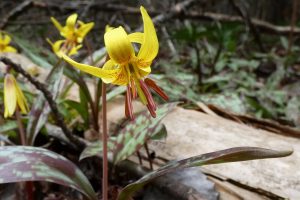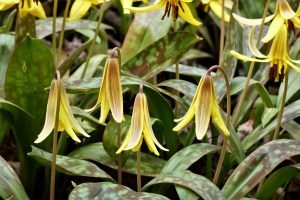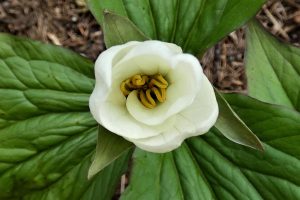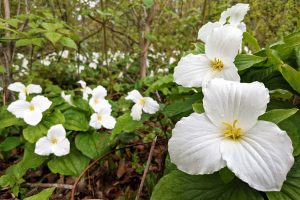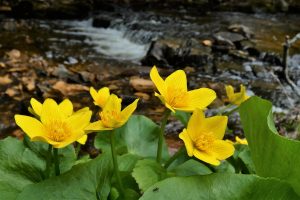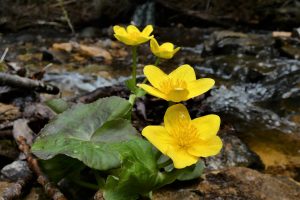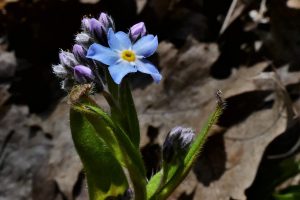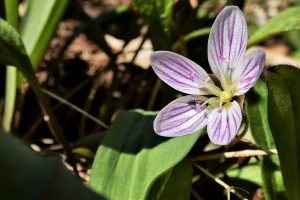May is the month for wildflowers in forests of northern Michigan. At Mackinac State Historic Parks, both Mackinac Island State Park and Historic Mill Creek are perfect places to wander miles of trails and find yourself amidst blankets of colorful blossoms. Spring woodland wildflowers are ephemeral, or short-lived, with their plants working hard to use energy from the sun before leaves of the tree canopy, high above, cast deep shadows across the forest floor.
The photos that follow are just a few examples of many wildflower species you can discover each May at Mackinac. Although disagreement occurs about which flowering plants should officially be considered “wildflowers” the MSHP checklist includes 270 species. Scientists have identified, cataloged, and studied Mackinac Island’s plant life for more than 200 years, starting with English botanist Thomas Nuttall in 1810. Our current checklist is based on a 1995 study by Mackinac Island resident and botanist Patricia Martin. For trail maps and information, visit www.mackinacparks.com.
Whether you dig deep into taxonomy or simply enjoy their subtle shapes and colors, the blossoms of Mackinac’s forests put on a show to be cherished during this special season. Miles of footpaths invite you to slow your pace, pay attention, and let nature’s beauty refresh your mind and spirit.
Welcome to the North Woods. This is Mackinac.
Yellow trout lily
A flower named after a fish? Thankfully, the trout lily was named after the speckled pattern of its leaves rather than a fishy smell. Small, yellow and rust-orange blossoms nod downward before maturing. When open, they feature backward-curving petals which reveal six reddish brown anthers, containing pollen. Growing in large colonies, many plants are sterile, consisting of leaves without a blossom.
Large-flowered trillium
Named for their sets of three leaves and three petals, blankets of trillium are hard to miss in Mackinac’s forests. This slow-growing plant has large white blossoms which bloom before leaves of nearby maple and beech trees emerge. As they take two years to fully germinate, trillium populations can be endangered by illegal wildflower collecting. All species of trillium are protected by law in Michigan.
Marsh Marigold
Growing in colonies along the shore of Mill Creek, marsh marigold has shiny and smooth heart-shaped leaves, nearly as large as a person’s hand. Stout, hollow stems support bright yellow blossoms. What look like petals are actually yellow “sepals” a part of flowering plants that often support delicate petals.
Forget-me-not
Native to Europe, several species of forget-me-not have been common additions to gardens for centuries. These tiny sky-blue blossoms can be found blooming with early native wildlflowers of Mackinac Island. The hardy plants readily self-seed, often spreading far from their original plantings. Look for them along trails adjacent to Mackinac Island cemeteries.
Spring Beauty
One of the earliest flowers to bloom in the North Woods, spring beauty deserve the reputation their name implies. Light pink or white flowers are veined with darker pink, inviting insects to stop and pollinate. With narrow, grass-like leaves these small plants seemingly disappear after their short-lived blossoms fall to the forest floor.


